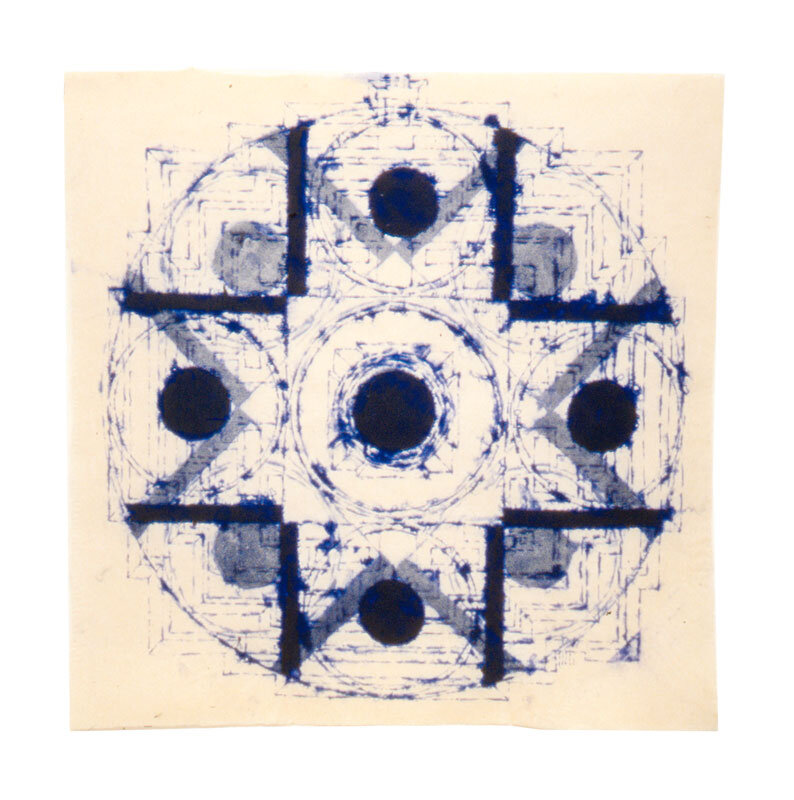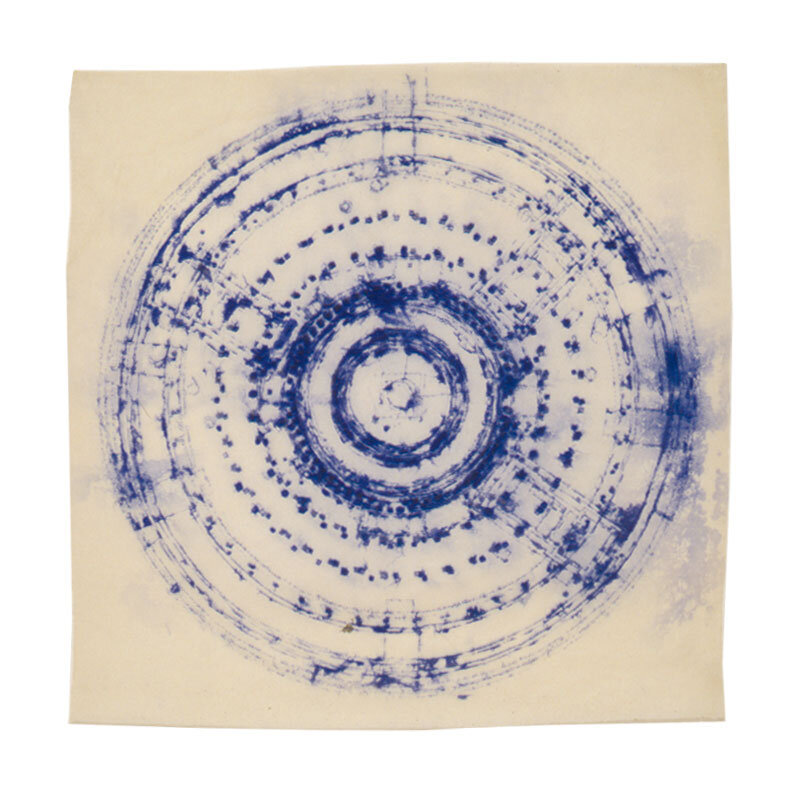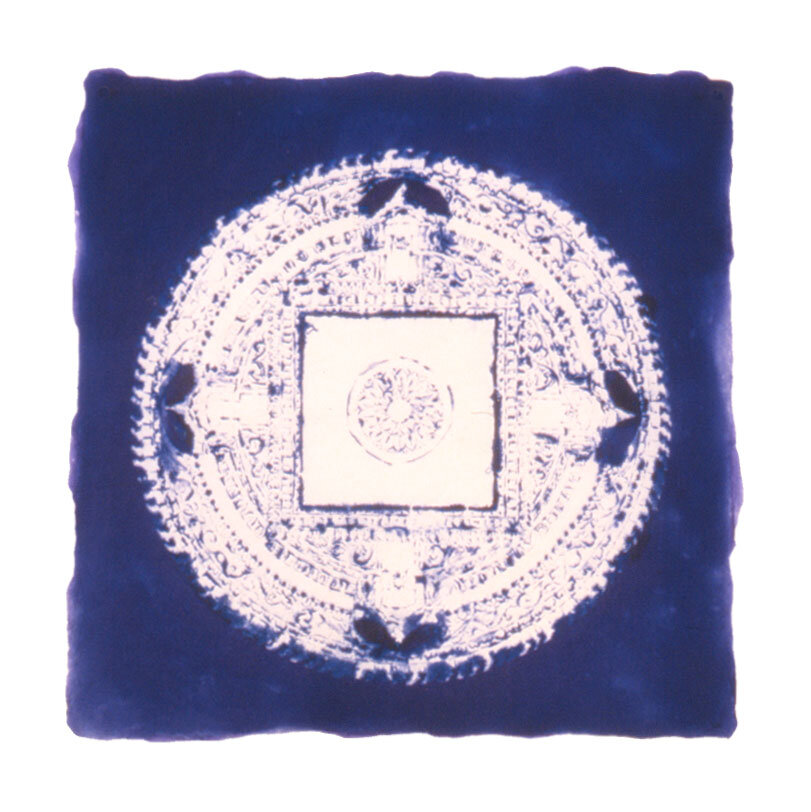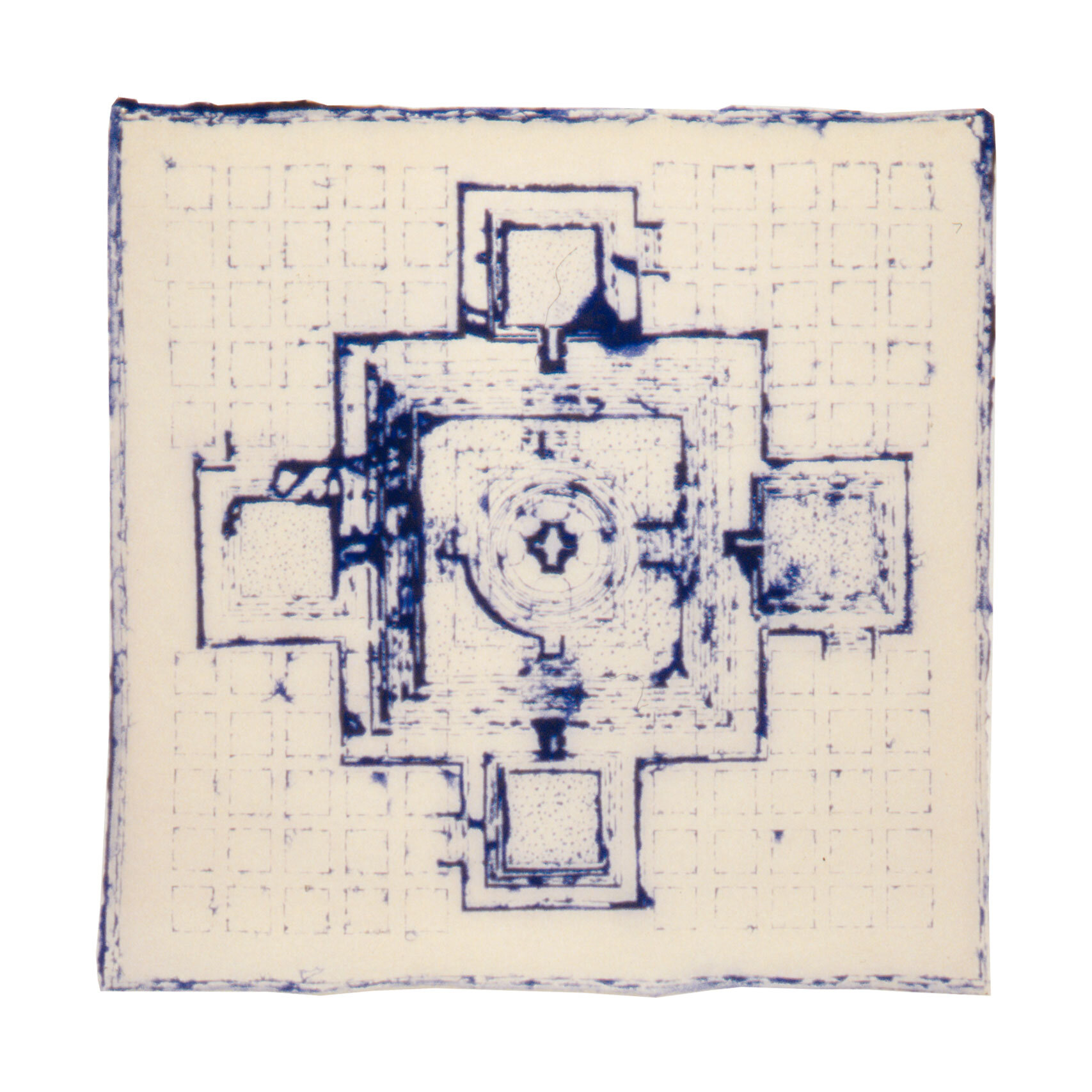Arlene Shechet
Arlene Shechet
Workspace Program Resident 1996




Arlene Shechet’s sculptures that proceeded her paperworks were takes on the form of the seated Buddha. Continuing this preoccupation, she produced the Mind Field Series, representations of stupas and floor plans of various Buddhist temples, during her Workspace residency. In her more recent sculptures titled Once Removed Series, blue abaca paper vessels sit atop their white inverted, mirror images in plaster, replacing the literal forms of the earlier work with a stronger sense of transcendence.
Once she realized paper was a kind of layering, another skin, she became excited at the possibility of expanding her engagement with process and translating her visual iconography of Buddhist symbols, meditation mandalas and stupa plans into the new medium. Shechet began by drawing the plans of ancient and often extinct Buddhist temples from sites all over Asia onto mylar which she cut into stencils and brought to the Mill. On prepared sheets of white abaca, she manipulated various blue pulps made of linen fiber through the acetate, sometimes adding blocks of color or allowing the liquefied paint to seep beyond the edges of the stencil. Because it is important to the artist that evidence of the process of making the paperworks is embedded into the finished sheet, she changed the consistency of the pulp, making it thicker and thinner, to imply various levels of dissolution of information.
Shechet layers and rotates architectural blueprints, turning concentric bands of repeating arches, columns and other forms into a two-dimensional mandala.
"As "blueprints," these images of places," Shechet explains, "combine the architecture of the mind (mandalas) with real site plans of ancient Buddhist shrines (stupas)...In juxtaposing mandalas and stupas, I build new forms using an ancient framework."
While the use of blue pigments refers to water, this series is named for a special blue and white porcelain, Flow Blue, which is iconic in cultures of the East and West, but originally invented in China. By translating her interests in math, maps, diagrams, and directional elements, Shechet attempts to create a language that exists in the West and simultaneously refers to the East.
About the Artist
Arlene Shechet (b. New York City, NY, 1951-), fascinated by the way things are made, likens her studio to both farm and factory. Employing an experimental approach to ceramic sculpture, she tests the limits of gravity, color, and texture by pushing against the boundary of classical techniques, sometimes fusing her kiln-fired creations with complex plinths formed of wood, steel, and concrete.
Arlene Shechet received a BA from New York University, and an MFA from the Rhode Island School of Design (1978). She has received many honors, among them an American Academy of Arts and Letters Award (2011); Anonymous Was A Woman Individual Artist Award (2010); Joan Mitchell Foundation Painters and Sculptors Grant (2010); Guggenheim Memorial Foundation Fellowship (2004); Artist Fellowship Grants from the New York Foundation for the Arts (1999, 1993, 1986); and a National Endowment for the Arts Fellowship (1986-87).
Major exhibitions of her work have appeared at the Phillips Collection (2014); RISD Museum (2014); Weatherspoon Art Museum (2013); Anderson Gallery, Richmond (2012); Nerman Museum of Contemporary Art (2012); International Ceramic Biennial (2010); Museum of Contemporary Art Denver (2009); Tang Museum (2009); ICA Philadelphia (2004); Aldrich Contemporary Art Museum (2004); Henry Art Gallery (2003); and the Boulder Museum of Contemporary Art (2000). Arlene Shechet lives and works in New York and Woodstock, New York. (Source: Art21)
For more information, please visit their website: https://www.arleneshechet.net/





